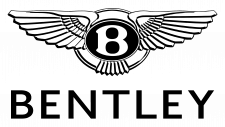Piaggio Logo
Piaggio stands as an Italian motor vehicle manufacturer. Rinaldo Piaggio founded the company with the goal of providing modern transportation solutions. Initially, they focused on railway vehicles but soon expanded into the aviation sector. Post-World War II, Piaggio shifted its innovation to meet the pressing need for affordable, reliable personal transportation. This led to the creation of the iconic Vespa scooter, which changed the landscape of urban mobility. It came from a desire to design a vehicle for the masses. The company’s headquarters is in Pontedera, Italy.
Meaning and history
Piaggio, an Italian company, was founded in 1884 by Rinaldo Piaggio. Initially, it manufactured railway carriages and engines. Post World War I, Piaggio shifted to aerospace production. During World War II, its facilities were destroyed, prompting a focus shift to personal transport. In 1946, engineer Corradino D’Ascanio designed the Vespa scooter, a revolutionary design with a stress-bearing body. The Vespa quickly became popular, symbolizing freedom and imagination. Piaggio expanded globally, becoming synonymous with stylish scooters. The company faced financial challenges but was revitalized in the 2000s, focusing on innovation and global markets. Piaggio is a leader in scooter and motorcycle manufacturing, known for its blend of tradition and innovation.
What is Piaggio?
Piaggio is an Italian manufacturer of two-wheeled motor vehicles and compact commercial vehicles. Its creation revolutionized personal mobility with the launch of the Vespa. Today, Piaggio represents innovation, style, and practicality in urban transportation.
1946 – 1964
The logo depicted is a geometric emblem with a sleek, modern aesthetic. It consists of a shield-like shape divided diagonally from the top left to the bottom right. The upper section is a rich navy blue, while the lower is a bright sky blue, symbolizing both professionalism and approachability. Emblazoned on the shield is a capital “P” in a bold, serif typeface, signifying the company’s initial. The letter’s color is white, creating a striking contrast against the blue background. Below the “P”, the word “PIAGGIO” is written in all caps with a sans-serif font, indicating a blend of tradition and modernity. The entire emblem is encased in a thin white border, enhancing its prominence and giving it a clean, finished look.
1964 – 1966
This logo maintains the rectangular shield-like border, but the internal design has undergone a significant transformation. At the top, a stylized bird-like figure, possibly a nod to freedom and speed, replaces the solid block of color. The letter “P” is now larger and more abstract, its form integrating seamlessly with an upright “R”, suggesting the fusion of letters in a single, fluid motion. The typeface is a serif style, but with a modern twist, emphasizing elegance and a sense of timelessness. The color remains a deep, consistent navy blue, creating an air of sophistication.
1966 – 1993
The evolution presents a hexagonal border, a departure from the previous rectangular shape. Dominating the hexagon is a simplified, streamlined white emblem. This symbol is centered against a backdrop of solid mid-tone blue. Below this, “PIAGGIO” is spelled out in bold, block letters, contrasting starkly with the emblem’s color. The text is now placed outside of the hexagon, directly to the right, suggesting a more pronounced separation of symbol and text. This creates a stark dichotomy between the minimalist graphic and the assertive typography, evoking a blend of innovation and solidity.
1993 – 1999
The logo evolves into a harmonious blend of emblem and text. The hexagonal frame remains, but now the inside houses a white, abstract mark resembling a tree or an arrow, pointing upward and signifying growth or direction. This symbol is more pronounced against the blue background. Below the hexagon, “PIAGGIO” reappears in a strong, sans-serif font. The letters are bold and black, grounding the logo with a sense of stability. The brand name is centrally aligned under the emblem, integrating the components into a cohesive unit.
1999 – 2015
This iteration of the logo introduces a three-dimensional effect to the hexagon and the emblem within, giving it a polished, modern appearance. The emblem, a stylized symbol that suggests a propeller or a tree, now has a gradient that transitions from a lighter to a darker shade of blue, adding depth and a metallic sheen. This creates an illusion of light reflecting off its surface, enhancing the logo’s tactile feel. The border of the hexagon has been replaced with a gradient silver frame, further accentuating the 3D look. The word “PIAGGIO” is set in a clean, sans-serif typeface and placed directly below the emblem, grounding the design with simplicity. Additionally, the registered trademark symbol is now visible, asserting the brand’s established identity and legal protection. This design radiates contemporary sophistication, with its use of gradients and metallic effects to signify technological advancement and high quality.
2015 – Today
The Piaggio logo features a brighter palette, enhancing its visibility and modern appeal. The hexagonal border, reminiscent of a silver gear, encases a radiant blue field that brings a sense of freshness and energy. At the center stands the signature emblem, an abstract representation that could signify a propeller or leaf, maintaining its iconic shape in a crisp white. This central figure is bolder, asserting the brand’s identity with confidence. The “PIAGGIO” text beneath the hexagon sports a slightly altered font, with softer edges that suggest accessibility and friendliness. The registered trademark symbol is discreet yet present, indicating Piaggio’s established legacy. The overall design shift towards lighter tones reflects a forward-thinking approach, embracing evolution while respecting the brand’s storied past.

















